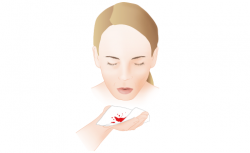Do I Have Internal Bleeding from Alcohol?
Whenever you drink alcohol, you predispose yourself to internal bleeding through irritation of the esophagus, stomach, and intestines along with a multitude of health conditions that can increase your internal bleeding from alcohol risks. Unfortunately, internal bleeding from alcohol occurs more often than most people realize and you may not show any outward signs until significant damages have been done.
What Causes Internal Bleeding From Alcohol?
According to eMedicineHealth internal bleeding may occur in three instances:
- if there is enough damage to the blood vessel that it can’t easily be repaired;
- if there aren’t enough clotting factors in the blood to make the repair; or
- if medications are taken that prevent clotting from occurring.
Alcohol contributes to each of these occurrences and often, in a combination of ways. Alcohol prevents the blood from clotting. Heavy or long term drinkers, occasional binge drinkers, and women are at an increased risk of developing liver problems and the contributing clotting factors and blood flow problems. Damages in the GI tract can cause liver impairments, bleeding varices, and gastrointestinal bleeding from lesions in the stomach or small intestine.
High blood pressure and heart diseases can weaken blood vessel walls causing them to dilate and form aneurysms that are at a higher risk of bleeding. The American Heart Association recommends drinking alcohol in moderation. Light-moderate drinking is defined for men, up to two drinks a day, and for women, one. Although some studies have shown that small amounts of alcohol may be beneficial to the heart, the association cautions against starting to drink for that purpose.
Signs of Internal Bleeding From Alcohol

Coughing and vomiting blood are signs of internal bleeding.
Some organs tolerate more internal bleeding than others and it may take a while for the signs to appear. Other organs will show signs of decreased functioning with minimal amounts of bleeding. According to eMedicineHealth, “Sometimes it is the location of the bleeding and not the amount that makes the difference. Sometimes it is the amount of blood that is lost and sometimes it is a combination of the two.”
Signs of internal bleeding from alcohol to look for may include the following:
- Coughing up blood
- Vomiting blood
- Blood in the stools or black, tarry stools
- Blood in the urine
- Ulcers
- Stroke-like symptoms
- Pain in the chest or abdomen
Common Conditions Associated with Internal Bleeding from Alcohol
The gastrointestinal (GI) tract includes the mouth, esophagus, stomach, and intestines. You may feel symptoms of heart burn or abdominal pain as the alcohol passes through the upper GI tract, eroding the esophagus and stomach linings. Capillaries and vessels lining the GI tract will continue to bleed as long as they remain irritated by alcohol use. According to a publication study by the NIAAA “the direct contact of alcoholic beverages with the mucosa that lines the upper GI tract can induce numerous metabolic and functional changes.” As alcohol deteriorates the mucosal linings in the small and large intestines, necessary nutrients may be inhibited from entering the bloodstream while the toxic poisons of alcohol are allowed to pass more easily into the blood and to the liver.
Liver cirrhosis is one of the most commonly associated health impairments that alcohol users face. If the liver is unable to function properly, mechanisms that control blood clotting factors in the blood are affected with a decreased ability to clear toxins leading to cell death in the liver and other organs or bodily tissues. According to eMedicineHealth, “liver failure or cirrhosis can also cause blood to flow abnormally in the liver or portal system, which leads to the formation of swollen veins in the esophagus and other parts of the body, called varices, these veins have the tendency to aggressively bleed.”
When to Seek Medical Care
The signs of internal bleeding from alcohol can be self evident at times, while in other circumstances, blood tests and medical examinations may be required to pinpoint the bleeding source and underlying conditions that contribute to it. Too often, people who drink alcohol ignore warning signs of internal bleeding from alcohol under the assumption that if they stop drinking, things will get better, but, this is not always the case.
Your health can be seriously compromised in many different ways and once a diagnosis is made, you may be well on your way to a seriously debilitated life or early death from the damages. Knowing when to seek medical care is important. For instance:
- If you often feel tired and weak, you may be anemic from decreased blood cell count. You could be experiencing internal bleeding on a gradual basis from a variety of sources without showing any outward signs mentioned above.
- If you are vomiting blood or bleeding from the rectum, these are potential signs of significant blood loss. The damages to the circulatory system and vital organs can lead to brain, heart, liver, kidney, or lung failures as well as coma, seizures, or death.
- The appearance of pale, cool, or clammy skin may be signs of internal bleeding from alcohol and if enough blood is decreased in the circulatory system, alcohol shock. Hypertension and hypotension are signs of alcohol shock that often precede a stroke or represent other signs of serious illnesses and you should get immediate medical attention. Other signs of alcohol shock or stroke may include loss of consciousness, excessive sweating, confusion, vision loss, speech difficulties, facial droop, and severe pain or weakness of one side of the body.
- Pain in the abdomen or chest may be signs of internal bleeding as leakage of blood causes irritation and inflammation in the surrounding areas of the leakage site.




